They thought theyâd die trapped in a parking lot. How 150 survivors of Californiaâs deadliest fire made it out alive
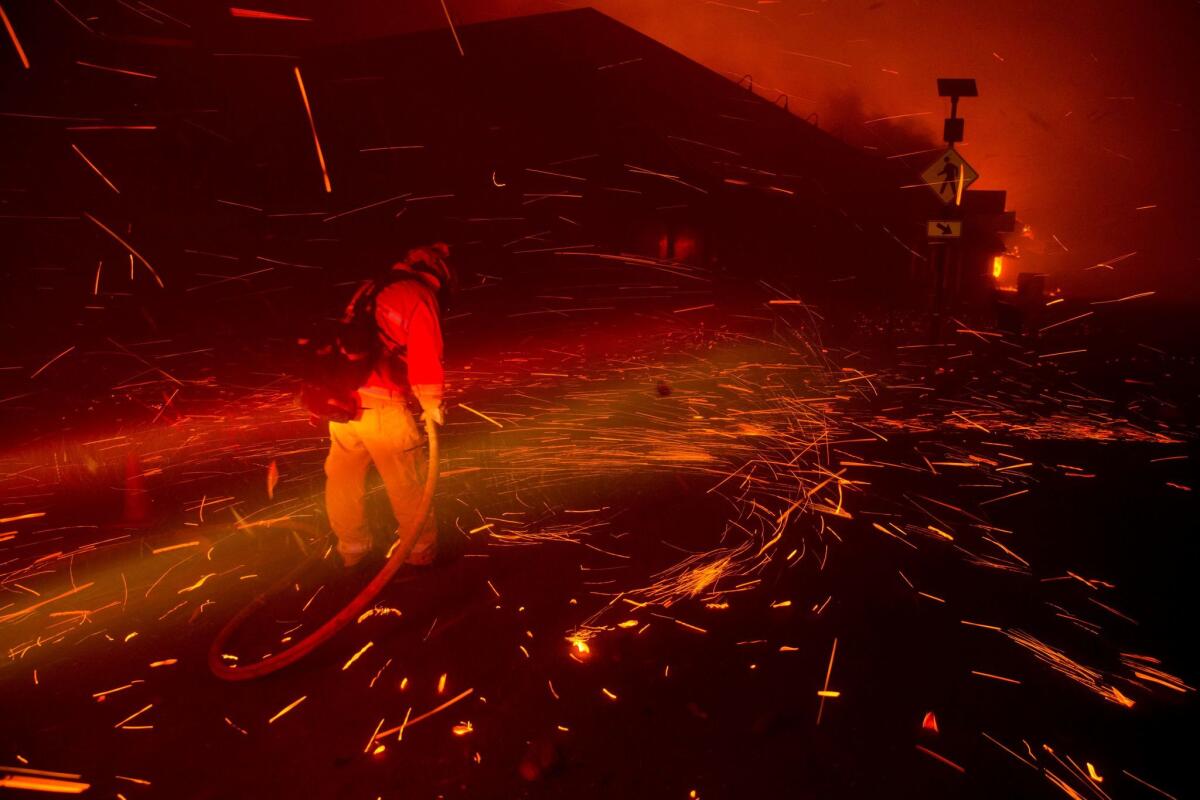
It was the best bad place.
To the south was a gun shop called Fins, Fur & Feather Sports, stocked with live ammunition. To the northeast, a propane yard. Across the street, a Fastrip gas station. All around, soaring, drought-crisp pines.
And in the center? About 150 terrified people who had fled the ferocious Camp fire only to be stopped at the intersection of Skyway and Clark Road, forced to sit out the deadliest conflagration in California history.
In a parking lot. Surrounded by fuel. Barred from escape by roaring flames and roads that were choked, first with traffic, then abandoned vehicles, and, finally, with burned-out hulks of charred metal.
âAre we gonna die?â volunteer firefighter Chris Rainey was asked, over and over again. His job that day was to keep the panicky crowd as calm as possible. His response each and every time: âNo, youâre not gonna die.â
Despite its obvious downsides, he told them, the parking lot was the safest place to be on Nov. 8, as flames raced through Paradise with astonishing speed, taking authorities and residents by surprise, snarling roads with evacuees, killing 88 people and counting.
A complicated series of small decisions made by firefighters, law enforcement personnel, volunteers and evacuees themselves saved the people in the parking lot and hundreds of others â men, women and children who could not leave their burning neighborhoods and had to do what no one wants to do in a disaster.
Wait.
Calin Moldovan, an engineer with the California Department of Forestry and Fire Protection, had just started an 11-day vacation at his home in a Sacramento suburb when he awoke to a text message from his captain in Magalia, population 11,000 or so, tucked on a ridge in the Sierra Nevada north of Paradise.
The message bore a single image: a giant, billowing column of smoke.
How bad? Moldovan texted back.
Bad.
So the 34-year-old hopped into his Ford Fusion hybrid, raced through the Sacramento Valley and into the Sierra Nevada, tailing fire engines up the mountain on Clark Road, as residents fled in the opposite direction.
When he arrived in Paradise, the winds were so strong that smoke could no longer billow up. Instead, it moved side to side, shrouding the town in a cloud so dark the sun was blotted out. It was 10:30 a.m.
Moldovan whipped out his smartphone to document the otherworldly experience.
An hour later, the crush of cars at Skyway and Clark came to a standstill. The normally bustling Y-shaped intersection joins two of the main ways out of the townâs northern tip.
On this morning, there was only silence â dozens of people waiting for cars to move. Flames were âsheeting across the road,â he said. The fireâs main flank approached from the east. Showers of embers ignited homes to the west.
The fire âbasically became a noose that began to shrink,â Moldovan said.
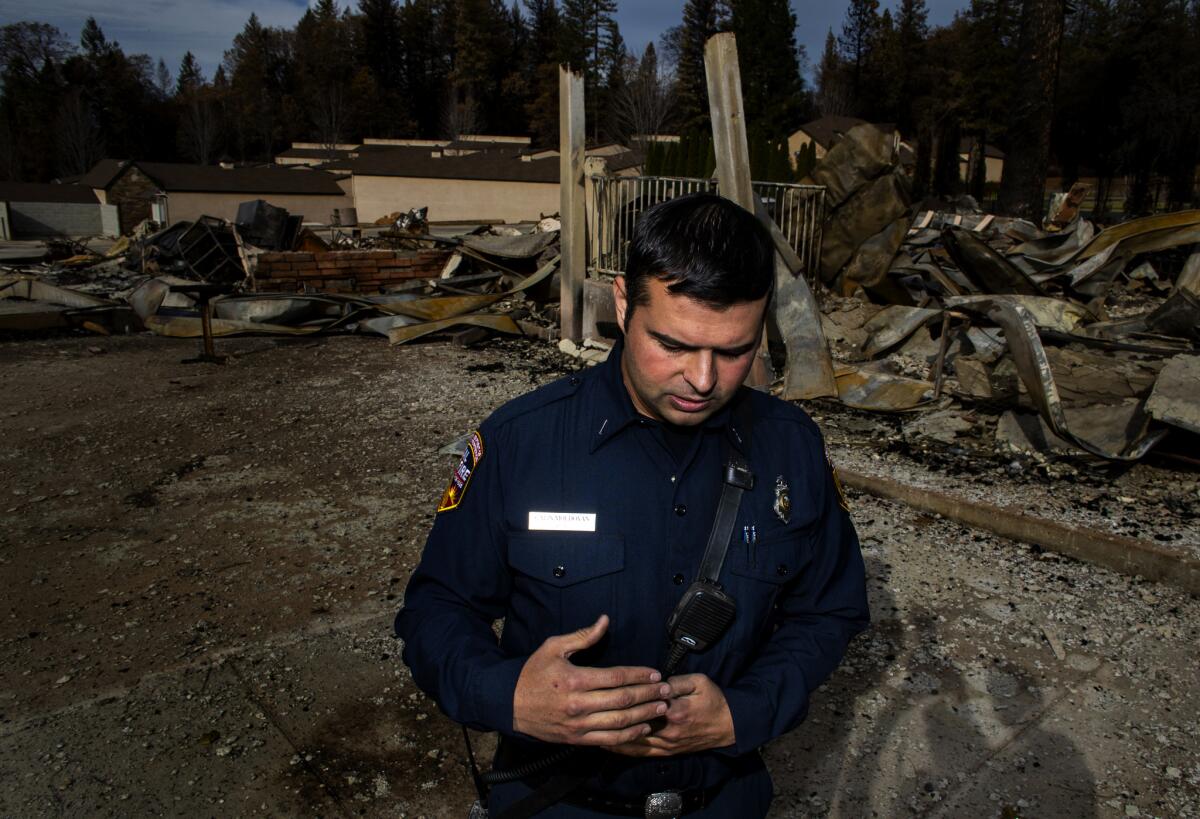
Thatâs when he and several law enforcement officers made one of many decisions that would ultimately help save more than 100 lives.
The intersection was home to a new strip mall. Its parking lot was freshly poured concrete. Two metal-roofed buildings were under construction. At its edge was Optimo lounge, a nightspot known for live music, karaoke and Chinese food.
The sloping landscape embraced the mall, creating a kind of bowl shape. The fierce winds shot over the bowl, which kept burning embers mostly at bay.
âIt doesnât mean this was the safest place in the whole entire Paradise ridge,â said Moldovan, the first full-time firefighter on the scene. âIt just means that it was the safest place that we had access to at the time.â
As the fire transformed trees into torches, Moldovan and the law enforcement officers shepherded evacuees out of cars and onto the concrete lot. Volunteers helped people in wheelchairs trundle over curbs. Others served as lookouts, monitoring flames that neared the strip mallâs buildings and threatened the panicked crowd.
âDogs, cats and pets. People bringing suitcases,â Moldovan recalled. âPeople crying, people reverting in the fetal position and sleeping on the curb.â
Only one thing will persuade someone who is stuck in a car near a propane yard as wind-whipped embers sail by to leave what seems like certain shelter for an open parking lot.
Brutal honesty.
Or as Butte County sheriffâs Det. Jim Beller told holdouts on that terrible Thursday, âLook, if you donât get out of your car, youâre going to die. You need to have a building between you and the propane company.â
Beller persuaded one elderly man to escort his ailing wife away from the gridlock to the lotâs relative safety. But the man came back. Heâd forgotten his wifeâs medication.
Will she die without it? Beller asked. She might, the man responded.
âIf she dies, Iâm not going to be able to live with myself,â Beller thought. âIf he goes to the car and dies, I'm not going to be able to live with myself. If I go to the car and get the medication and I die, I wonât know it.â
It was one more bad choice in a day filled with them.
Beller made his way carefully to the coupleâs car. He could hear the moan of gas from overheated propane tanks. He grabbed the medicine and ran back to the parking lot.
Thatâs when a firefighter yelled at the top of his lungs to the crowd at Skyway and Clark that if they heard explosions they should not run. The last thing they needed was mass panic.
âIt sounded like war,â Beller said. âI was scared to death, but I was trying not to show it. Because they were all staring at us the whole time.â
There was no water at Skyway and Clark.
The fire hydrants had all gone dry. Flames had consumed thousands of structures, exposing pipes and letting precious water drain away uselessly. The result was no water pressure anywhere in town.
Fire engines, which carry 500 gallons, had yet to reach the evacuees in their perilous redoubt, as the blaze raced ever closer.
Moldovan got on his radio. They needed air drops and engines and anything that could keep them safe until they were able to leave the scorched ridge.
Finally, the first fire engine roared up Skyway, punching its way through a string of abandoned cars, opening an escape route. Firefighters on board told members of the group that, if they moved fast, the engine could escort 10 cars south at a time.
Moldovan told dozens of people to prepare for a swift departure.
Ten minutes later, the first caravan was ready. Optimism soared.
Then a second fire engine plowed up the hill. Its sides were scorched by flames.
The message its occupants carried was grim: âDo not send anyone down,â a firefighter said, âbecause it will kill whoever we send in there.â
Not that the strip-mall-turned-temporary-refuge was all that much safer.
David Demaree watched it for hours from the vantage point of his truck, which he had parked at Skyway and Clark and repositioned as the flames moved.
The 60-year-old thought about joining the evacuees who found shelter in the parking lot. But he couldnât juggle the cat carrier with Gatsby and Willow inside, while leading Fayla, his border collie-husky mix, and dragging two backpacks filled with memories: DVDs of his kidsâ early Christmases, his grandfatherâs 1919 Georgetown University yearbook.
As the fire closed in on the evacuees, he sometimes wondered if heâd make it out, if heâd ever see his wife, Kathy, again. âI was ready at one point to drive through fire if I had to,â he said. âI was shook up. But you have to kind of keep yourself calm.â
So he stayed. And he watched.
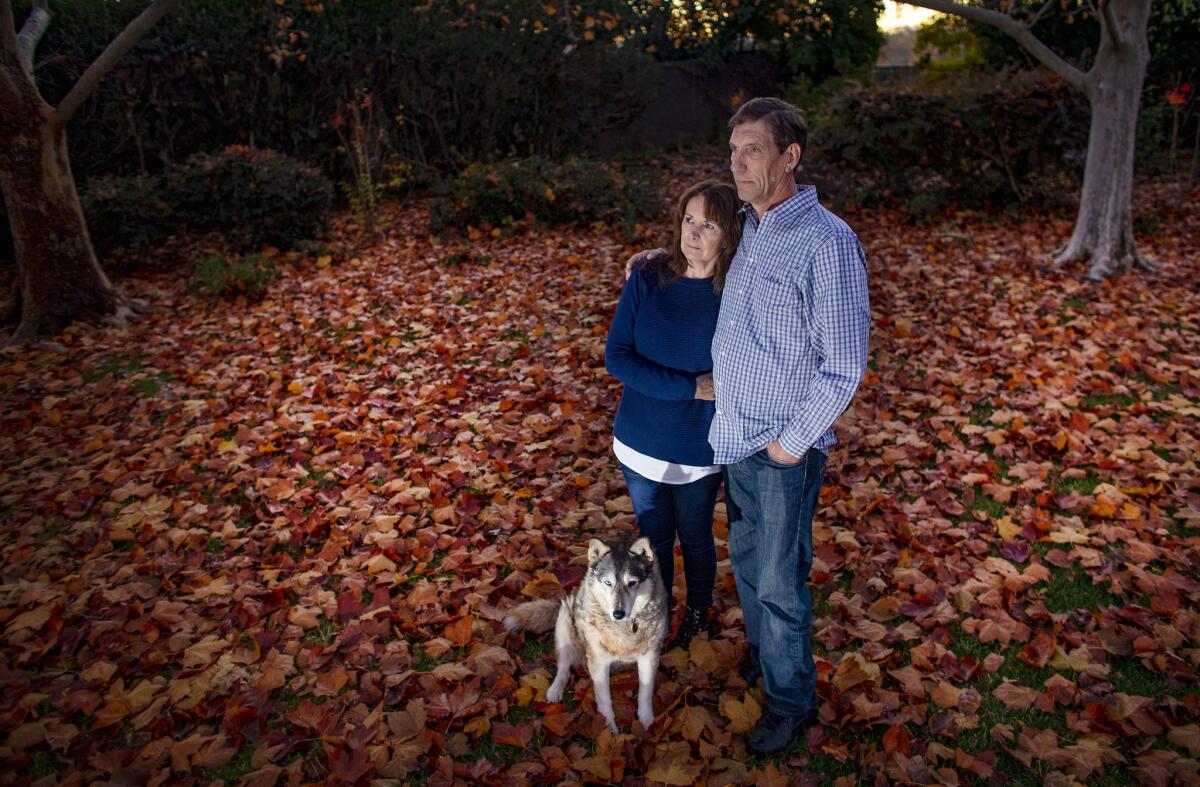
Flying embers ignited a spot fire in the frontyard of a house directly across Skyway from the Optimo parking lot. Firefighters on site caught it early and extinguished it with hand tools. But as the flames roared from east to west, ever closer, the house itself caught on fire.
The engines were gone. Theyâd left to help clear roads. There was nothing anyone could do.
âOne woman was standing on the side of the road, sobbing,â said Paradise police Sgt. Rob Nichols. âWe asked her to move. We didnât want her to get hurt.
âIt was her house burning.â
Sarah Drummond could feel the heat blasting off the burning home. The air was thick with smoke. People were coughing. The scene was âreally intense and gloomy,â she said. âThe looks on peopleâs faces, it was a saddening feeling in the whole area.â
Drummond is 19, a dietary aide at a local nursing home called Cypress Meadows Post-Acute. Buses that should have helped evacuate the facility were not allowed into the fire zone, so the patients were loaded into staff membersâ cars.
A man in his 80s with dementia ended up in the back seat of Drummondâs gray Ford Focus hatchback. In the front passenger seat was a woman in her late 60s, wearing a hospital gown and a diaper and hooked to an oxygen tank.
They left Cypress Meadows. And then, gridlock. Drummond flagged down a police officer to help her get the patients to the Optimo parking lot. Theyâd driven less than a mile. But the road was choked with abandoned cars. The cruiser couldnât get anywhere close. Neither patient could walk.
âThe old woman was in a lot of pain,â Drummond said. âHer diaper was leaking on my passenger seat. We got her out of the car ⌠She was saying, âOw!â And crying. I told the cops, you have to go easy on her ...They got the little old man out.â
The patients were loaded into the police car, but it didnât have seats, Drummond said, and the officer was driving âchaoticallyâ to get them around barriers as the fire bore down.
âThe little old residents were flopping around,â she said. âI was holding each of their hands so they wouldnât hit their heads. We got to the parking lot. We sat the old woman on a bucket.â
Her first words on getting to safety at Skyway and Clark: âWhen are we going to eat? I need a sandwich.â
She was diabetic and needed food to stabilize her blood sugar level. Nichols and Drummond walked through the crowd asking for food. Someone gave them cookies, a blanket and a Raiders ball cap to keep the old manâs head warm.
Then the house across the street ignited. Fire officials made yet another life-saving decision. They smashed a big pane of glass at the coffee shop under construction and shepherded the evacuees in.
From inside the shop on the parking lotâs edge, Drummond could feel the fireâs heat. She began to cry. âWhat if we donât make it out of here?â she wondered. âWhat if we end up getting stuck in this thing, this coffee shop, and it caught on fire?â
But as the flames drew nearer, her panic subsided. The firefighters knew what they were doing, she figured. They were all going to be OK.
âI had a little string of faith in me,â Drummond said.
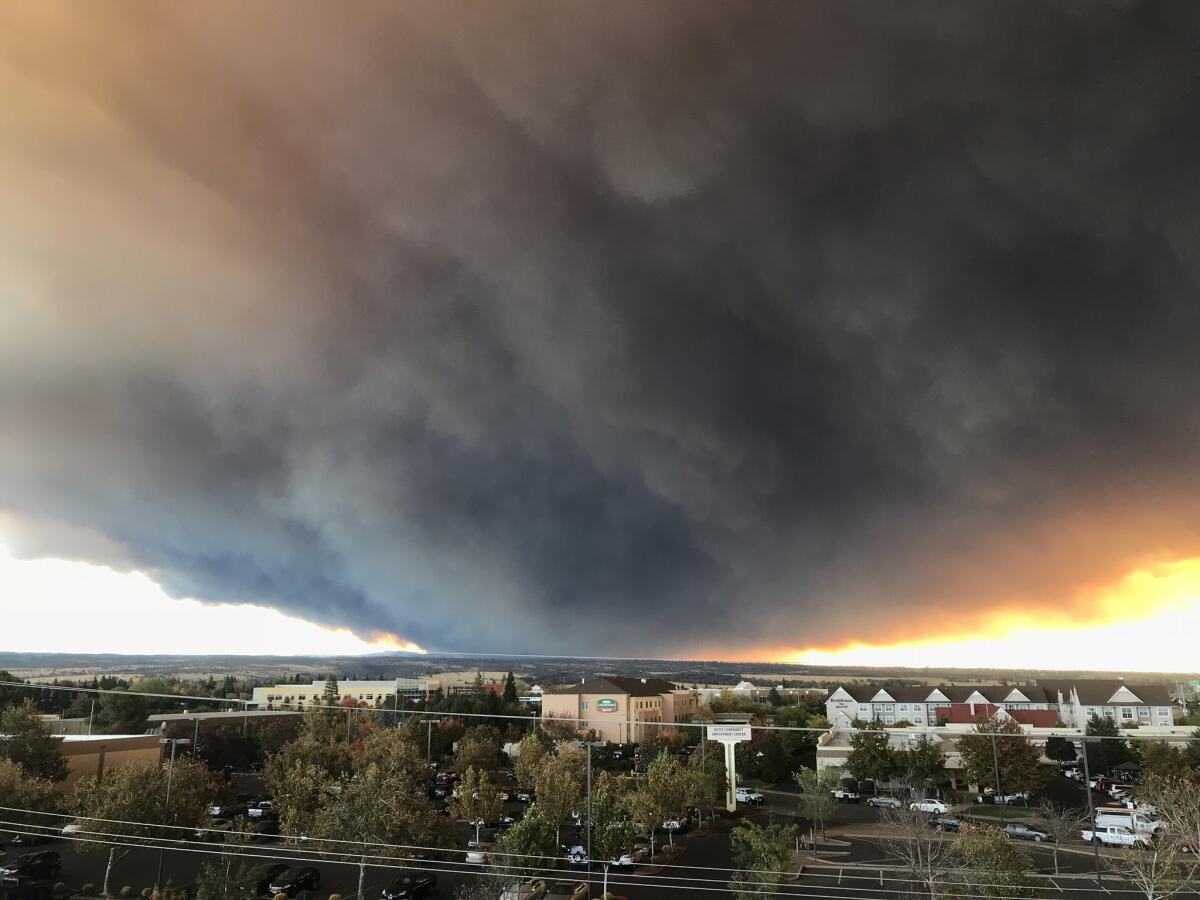
Moldovan and Cal Fire Capt. Sean Norman, who ordered the break-in at Skyway and Clark, figured the strip mallâs two unfinished buildings could tolerate heat for 30 minutes to an hour before they started to burn.
If the coffee shop ignited with evacuees inside, the men reasoned, the people could be moved to a different building. If that caught fire, everyone could head to the center of the parking lot again and huddle tightly together.
It was the kind of bet being made in pockets throughout Paradise. Some people waited out the fire in houses, and others in store parking lots where they prayed the asphalt expanses could keep the flames at bay.
Norman was well aware of the danger. While driving toward the Optimo parking lot earlier in the day, he passed a car that had rolled and was engulfed in flames. A body was later found inside. He saw motorists abandoning burning cars and running toward a nearby Walgreens.
Embers were catching in peopleâs hair, lighting it on fire. Evacuees ran past, badly burned, crying out for help.
âJust keep going to the Walgreens,â Norman had shouted. âThereâs firefighters waiting down there for you.â
Norman told firefighters to break into the drugstore. Somewhere between 60 and 80 evacuees poured inside. Two fire engines were stationed to defend the building.
His order to the firefighters: âWhatever you do, donât let this building catch on fire.â
The flames hit Walgreens hard from two different directions. It had already torched homes and a gas station. Shopping carts, wooden pallets and shrubbery ignited.
Abandoned vehicles blazed. Burning pine needles blew in the wind. Firefighters poured precious water on the Walgreens roof. Embers showered down. To Norman, it was an âurban firestorm.â
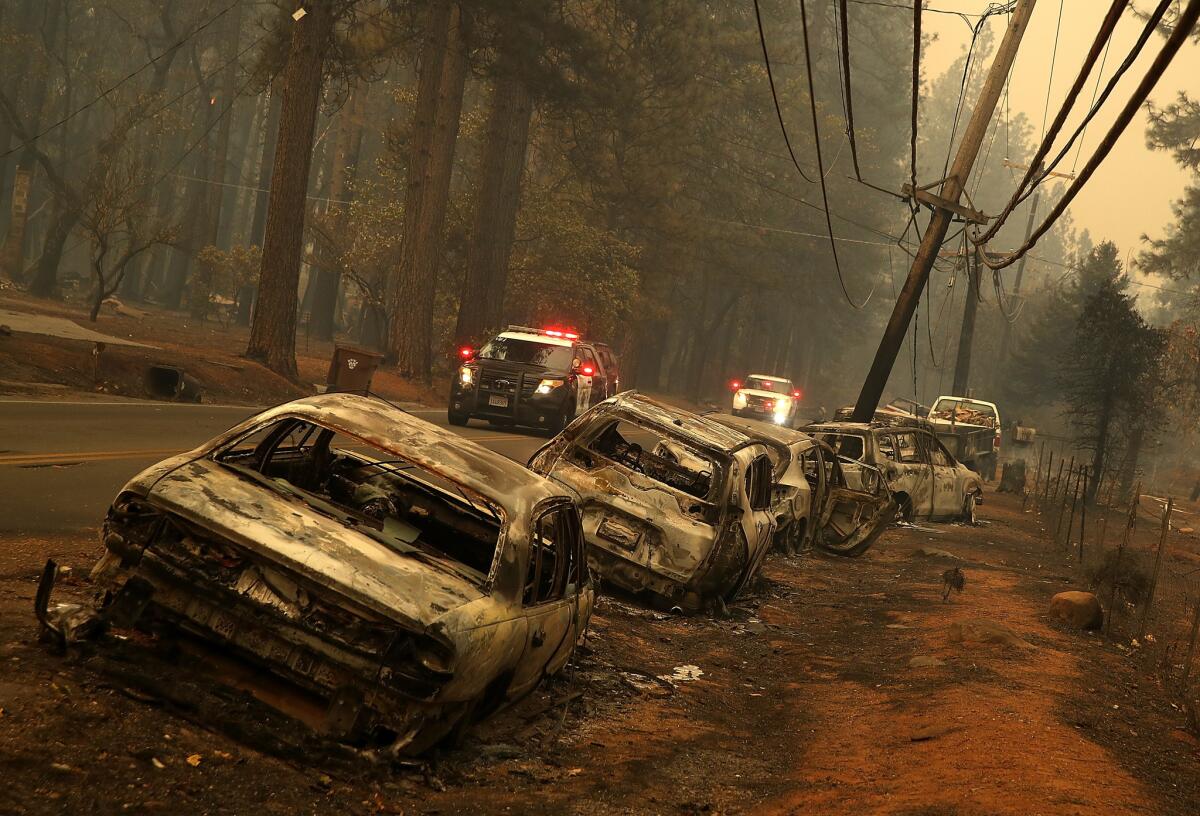
Walgreens held, thanks to its concrete-block construction and the firefightersâ efforts.
So did the parking lot at Skyway and Clark. As embers ignited a pine tree between the gun store and the coffee shop, fire engines finally returned.
They hosed down the tree. They sprayed water on Optimo, then stopped. They needed to save the scarce resource and focus on the gas station. Bulldozers cleared the road.
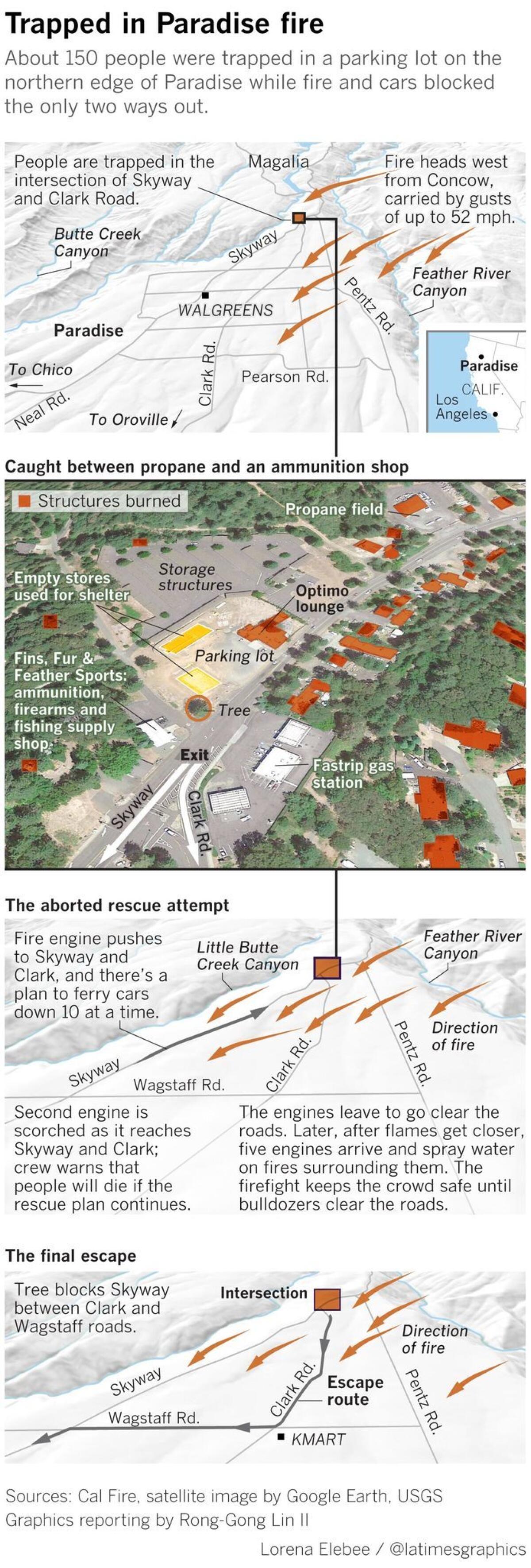
The parking lotâs weary inhabitants were finally able to drive off by late afternoon. Drummond and the nursing home residents made it to safety. Demaree was reunited with his wife. Their house was destroyed.
As the last evacuees left, Optimo burned.
Rainey, the volunteer firefighter, was one of the last to go. It was a good decision to get the people out before night fell, he said, even though they had to drive through flames to get to safety.
It was 6 p.m. Night had fallen. Firetrucks were making their way up the hill. Reinforcements, he thought, finally.
It was a sight to see.
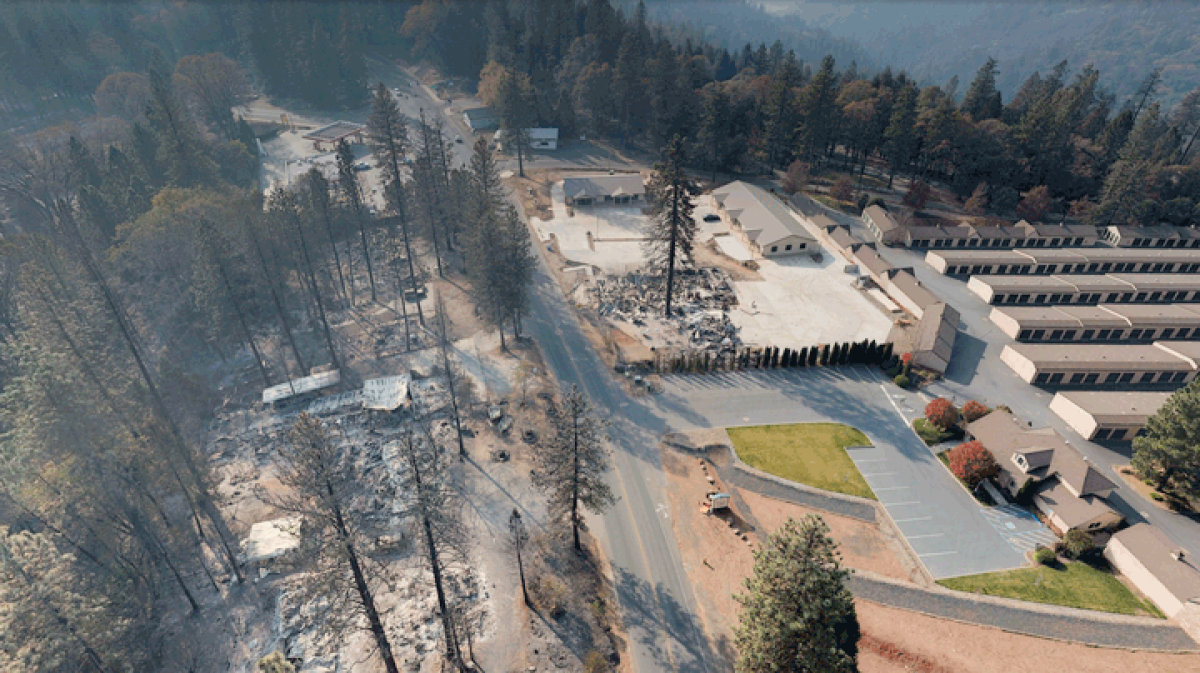
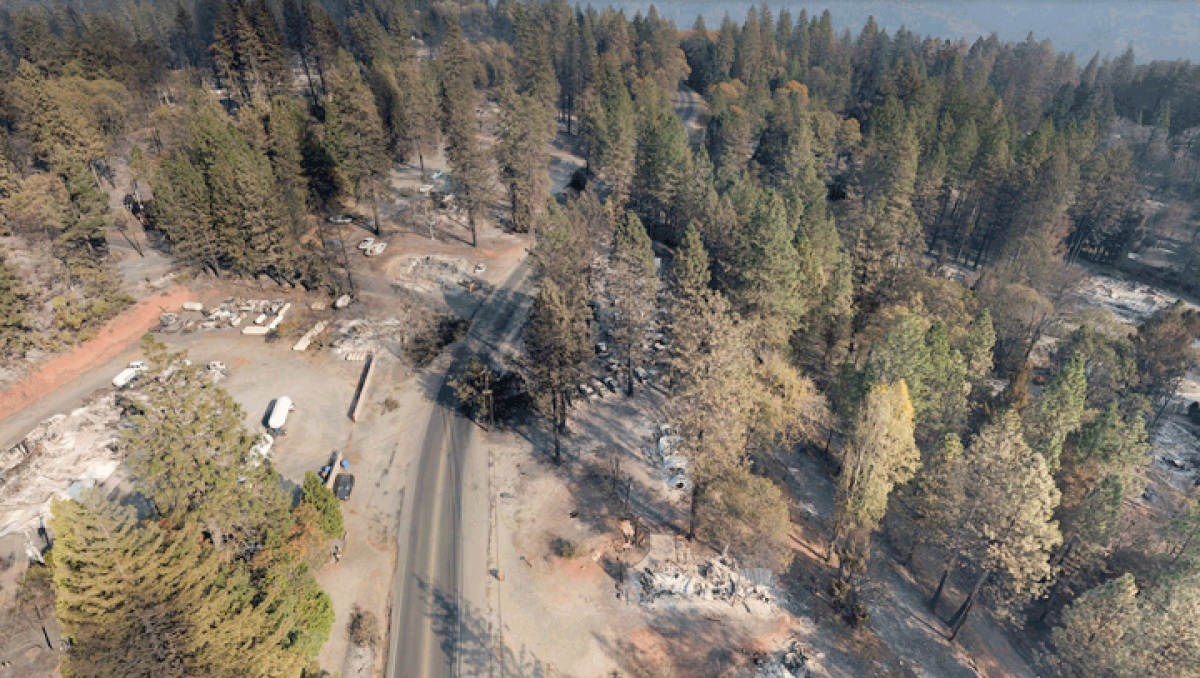
Twitter: @ronlin
Twitter: @marialaganga
Sign up for Essential California
The most important California stories and recommendations in your inbox every morning.
You may occasionally receive promotional content from the Los Angeles Times.









